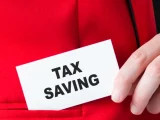
Sustainable and ESG-Focused Trading Portfolios: It’s Not Just About Feeling Good
November 11, 2025Let’s be honest. For a long time, the world of trading and the concept of “doing good” felt like they existed on different planets. One was all about fast moves, sharp elbows, and cold, hard profit. The other? Well, it seemed softer, slower—more about conscience than capital.
That old dichotomy is, frankly, dead. Today, building a sustainable and ESG-focused trading portfolio is one of the most pragmatic strategies you can adopt. It’s not about sacrificing returns for a clear conscience. It’s about understanding that companies who manage their environmental, social, and governance (ESG) risks are simply… better companies. They’re built to last.
What Exactly Are We Talking About? ESG Demystified
ESG isn’t just one thing. It’s a framework. A lens for looking at a company beyond its quarterly earnings. Think of it like buying a house. You wouldn’t just look at the paint color. You’d check the foundation (Governance), the plumbing and electrical (Environmental), and the neighborhood (Social).
Here’s a quick breakdown:
- Environmental (E): This covers a company’s relationship with the planet. Its carbon footprint, water usage, waste management, and how it navigates the risks and opportunities of climate change.
- Social (S): This is about people. How a company treats its employees, engages with its communities, ensures data privacy, and fosters diversity and inclusion. A company with high employee turnover and labor disputes? That’s a major social risk.
- Governance (G): This is the internal rulebook. It involves executive pay, shareholder rights, board diversity, and overall transparency. Good governance means accountability. It means leaders can’t just run the company into the ground for a short-term stock pop.
Why ESG Trading is Gaining Serious Traction
This isn’t a niche trend for a handful of idealists. The money flowing into ESG-focused funds is staggering. Here’s the deal: the market is finally pricing in long-term risk.
A company that pollutes its local water source faces massive future cleanup costs, lawsuits, and reputational ruin. A company with a toxic culture will struggle to attract and retain top talent. A company with a shady, insular board is a ticking time bomb for a scandal.
ESG analysis helps you spot these risks before they blow up. It’s a form of due diligence that, honestly, everyone should have been doing all along.
The Performance Question: Does ESG Actually Pay?
This is the billion-dollar question, right? Can you really do well by doing good? The evidence is increasingly convincing. While past performance is never a guarantee, numerous studies have shown that companies with strong ESG profiles often demonstrate:
- Lower volatility and lower risk.
- Better resilience during market downturns.
- Higher levels of innovation and operational efficiency.
Why? Because they’re managed more thoughtfully. They’re anticipating regulatory changes (like carbon taxes), they’re appealing to a new generation of consumers, and they’re avoiding the costly messes that poorly managed companies often create for themselves.
Building Your Own ESG-Focused Trading Portfolio
Okay, so you’re sold on the concept. How do you actually start building a portfolio that aligns with these principles? It’s part research, part strategy.
1. The Screening Process: Your ESG Filter
You can’t just trust a company’s marketing. You need to dig deeper. This is where ESG screening comes in. You can use two main approaches:
- Negative Screening: This is the classic start. You simply exclude industries or companies you find objectionable. Think fossil fuels, tobacco, or weapons manufacturing. It’s a straightforward way to clean up your portfolio.
- Positive Screening: This is the more proactive, and honestly more powerful, approach. Instead of just avoiding the bad, you actively seek out the leaders. You look for companies with top-tier ESG scores, those pioneering green technology, or those with exemplary labor practices.
2. Tools of the Trade: ETFs and Thematic Investing
Most of us don’t have the time to become ESG analysts overnight. That’s where Exchange-Traded Funds (ETFs) are a game-changer. You can buy a single ETF that holds a basket of companies pre-vetted for high ESG scores.
You can also lean into thematic investing. This means focusing on specific sustainability trends. Think about the entire ecosystem of renewable energy—not just the panel makers, but the battery storage companies, the smart grid software developers, the raw material suppliers. You’re betting on a theme, a whole sector shift.
3. Navigating the Murky Waters of “Greenwashing”
Ah, the elephant in the room. Greenwashing is when a company spends more time and money marketing its “green” image than actually minimizing its environmental impact. It’s a real problem.
So how do you spot it? Look for concrete data, not fluffy language. A company should report specific, measurable goals (e.g., “reduce emissions by 40% by 2030”) and have third-party verification for their claims. If their sustainability report is full of stock photos of smiling children and forests but light on hard numbers, be skeptical.
| Red Flag | What to Look For Instead |
| Vague claims like “committed to being green” | Specific, time-bound targets and metrics |
| Highlighting one small green initiative while core business is dirty | Holistic ESG integration across all operations |
| Lack of independent, third-party verification | Reports aligned with standards like SASB or GRI |
The Future is Already Here
This shift towards sustainable trading isn’t a fad. It’s a fundamental recalibration of how we define value and risk. Regulatory pressures are mounting. Consumer preferences are shifting. The cost of renewable energy is plummeting below the cost of fossil fuels in many parts of the world.
Building an ESG-focused portfolio is, in a way, a bet on the future. A bet that the companies that treat their stakeholders—employees, customers, the planet—with respect are the ones that will be standing tall decades from now. It’s a strategy that acknowledges a simple truth: the most durable returns are built on a durable foundation.
And that’s a trend worth trading on.




